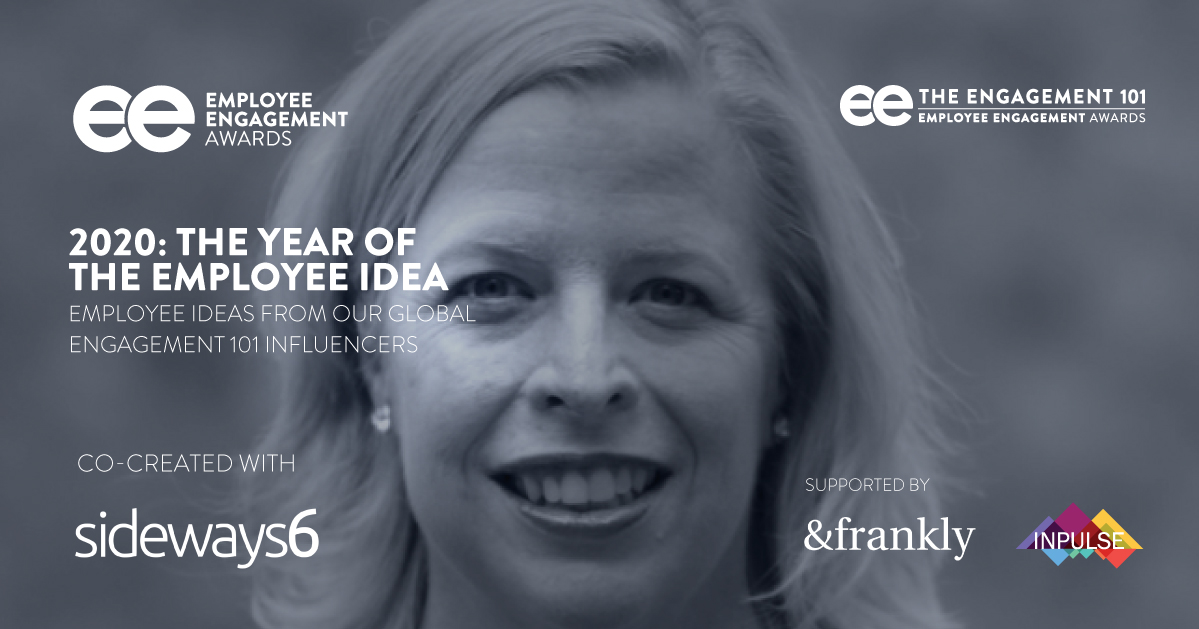
16th January 2020
2020: The Year of the Employee Idea: Aimee Lucas – Qualtrics XM Institute

This content was taken from our latest eBook: ‘2020: The Year of the Employee Idea: Employee Ideas from our global Engagement 101 Influencers’. To download the eBook in full. simply click here.
Aimee Lucas
Senior Principal Analyst
Qualtrics XM Institute
Employees are valuable assets for any organization – not only for what they do, but also for what they know. That’s why employee listening programs are so important. And it is through those listening programs that organizations can uncover employee ideas and nurture them from concept to value.
In my research, some of the common characteristics that emerged which set successful programs designed to tap into the power of employee ideas apart from the rest include:
- Leadership commitment: Employee ideas will go nowhere if there aren’t leaders who demonstrate their support through word and action. This includes being involved in reviewing ideas at the appropriate stages, dedicating funding to bring those ideas to life in the form of new tools, processes, or customer-facing services or product features, and publicly celebrating all ideas – whether or not they result in something new at the organization.
- An easy-to-use process: If an organization wants ideas from its employees, there needs to be an easy way for employees to participate. This can range from simple suggestion boxes to always-on technology platforms. But the process isn’t only about how an idea is submitted. The process also needs to be clear about what to submit, what will happen with the idea – including who will see it and how it will be reviewed, and what the employee can expect in terms of ongoing involvement if their idea takes flight
- Effective moderation: The worst thing that can happen is for employee submissions to go into a black hole, never to be seen again. This disregard for employee feedback can actually drive down employee engagement. That is why any employee idea program needs effective moderation by an individual or team who reviews submissions, connects related ideas together, directs ideas to people or teams who might already be working on projects related to them, and ensures all commitments made to employees are followed through. For some organizations, resource constraints on moderation and action-taking may mean only running time-bound campaigns to collect ideas on specific topics during specific time periods, while other organizations can have “always on” idea gathering enabled.
- Broad communication: When employee ideas result in new ways of doing business – internally or with customers – tell the story! After all of the work to generate and develop employee ideas into potentially valuable initiatives, organizations sometimes forget a valuable last step of broadly communicating success stories. Internal communications can share the perspective of the employee(s) involved and serve to educate and motivate other employees to sharing their ideas in the future. Internal success stories can also help smooth the adoption of new processes or systems when employees know it was an idea from their peer that triggered this change.
Tickets are available now for our London Employee Engagement Conference on 1st April 2020 – Click here to register now
Tickets are available now for our New York Employee Engagement Conference on 11th June 2020 – Click here to register now
This content was taken from our latest eBook: ‘2020: The Year of the Employee Idea: Employee Ideas from our global Engagement 101 Influencers’. To download the eBook in full. simply click here.

